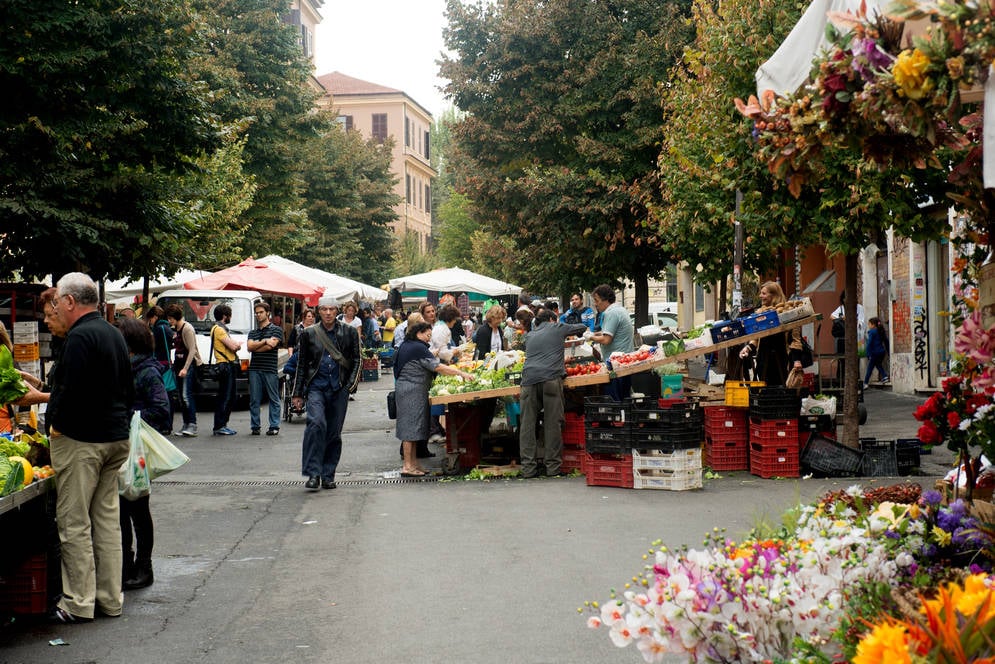Official Rome and Vatican ticket reseller

Rome neighborhoods: Pigneto
Pigneto is an urban area of the city of Rome that belongs to the Prenestino-Labicano zone and to a lesser extent to the Tiburtino zone and is included within the urban area between Torpignattara and San Lorenzo. It is an area of the city considered proletarian but at the same time very youthful.
The Pigneto neighborhood over time
The territory was formed in 1870; until then the area was still a rural area made up of laborers and peasants. Here the flocks were brought to the pasture and there was only the presence of some sporadic villas and some hamlets, scattered in the surrounding space. In 1870 urbanization began with the merger of several existing settlements, which led the area in the post-war period to be one of the largest popular settlements in Rome, consisting entirely of people of the * proletarian * class and working class.
Towards the end of the 19th century, an important number of industrial establishments and * factories * were developed in this area, along with craft workshops and laboratories that would occupy a vast area, thus beginning the slow process of urbanization that would lead this area to become a great important industrial agglomeration; this led to a consequent building and urban expansion that took place especially between 1920 and 1935 thanks to some private individuals who began to build houses or thanks to building cooperatives of garbage collectors, tram drivers and railway workers who build large buildings and housing complexes. Thus, it was that in the course of about fifteen years the Pigneto became a suburb full of life. After the War the buildings with the popular trait multiplied; the entire area is therefore characterized by the presence of different types of mainly residential buildings that are different from each other.
Then there is the so called “zona dei villini”, zone of the villas, which is composed of two-family art nouveau villas, consisting of at most two floors and bounded by private gardens inspired by the example of the garden city. The project involved 125 small villas, but in reality, there are currently fewer in number since the whole Pigneto zone, together with other neighboring zones, was heavily bombed in July and August in 1943.
The Pigneto zone today
Today Pigneto is a neighborhood that has its own distinct identity and a very specific personality.
It currently has around 52,000 inhabitants, many of whom are foreigners, especially Egyptians, Romanians, Peruvians and Filipinos. Indeed, the percentage of foreign students in schools is very high: the highest in all of Rome, so that the Pisacane school, for example, according to many, is considered the most multi-ethnic school in Italy. Furthermore, there is a strong presence of university students who attend the nearby University of La Sapienza and many new residents belonging to a middle-high class, artists and * intellectuals * are continuing to move there. These new settlements have modified the area making it gradually a very admired full of vitality neighborhood that is frequented and bustling especially at night.
Where to go in Pigneto
Over time this area has become home to numerous cultural initiatives, clubs and associations. One example is the Nuovo Cinema Aquila, a meeting point for cinema and culture for the community not only from Pigneto. There are also numerous restaurants and * trendy bars * including some pubs and beer places that have opened in recent years. The neighborhood has numerous pharmacies, schools, hotels and B&Bs.
It has also been the subject of some works for the redevelopment of the territory and various renovations of the buildings belonging to the first twenty years of the 20th century by their individual owners; the services have been greatly improved and the new metro Line C has opened, which has considerably improved public connections with the rest of the city. Today, Pigneto has 2 stations: one on Via del Pigneto and the other on Via Roberto Malatesta.